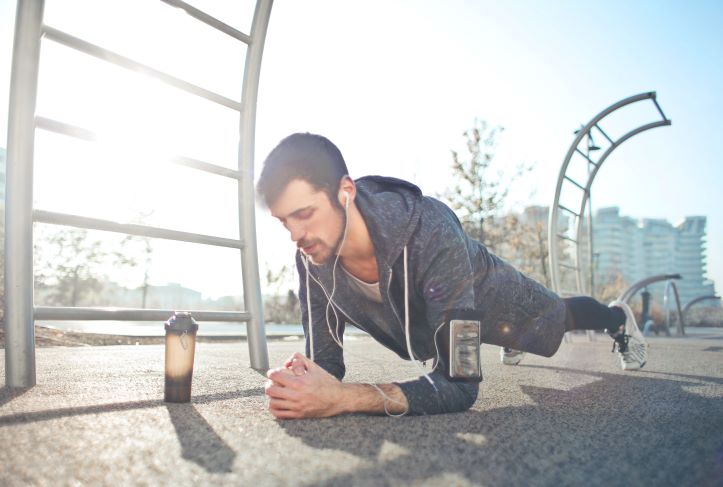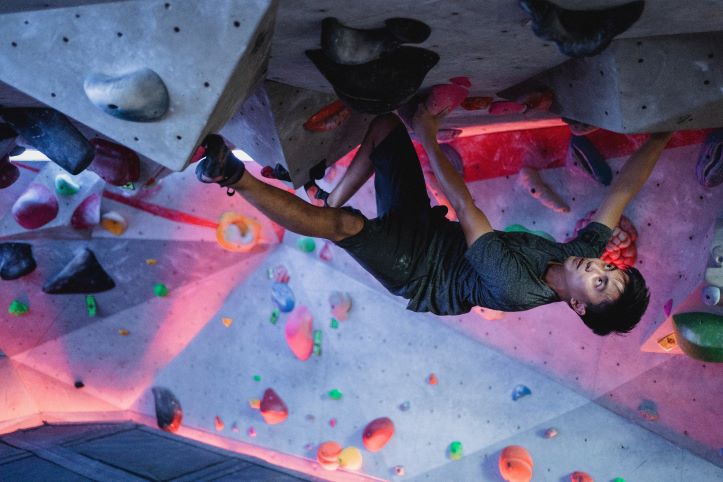Trying to strengthen your core and searching for what are the best exercises for core strength? Well then, welcome to the world of core strength, where a powerful midsection can make a world of difference in your overall fitness and daily life. Whether you’re an exercise enthusiast or just someone looking to enhance your well-being, understanding the significance of a strong core is key.
Your core, comprised of muscles in your abdomen, lower back, and hips, acts as a stabilizing powerhouse for your body. It’s not just about getting those six-pack abs; it’s about so much more! A robust core can improve your posture, helping you stand tall and confident. It also reduces the risk of injuries during physical activities, giving you the freedom to move without fear.
In this exciting blog, we’ll dive into the world of core-strengthening exercises that go beyond the typical crunches. Get ready to explore the magic of planks, the wonders of Pilates, and even some unconventional workouts like hula hooping! So, let’s jump on this journey together as we unlock the secrets to a stronger core and a healthier, more active lifestyle. Get ready to feel the burn and see the results that will leave you amazed!
Learn The Core Basics Before Learning What are the Best Exercises for Core Strength
When it comes to fitness, building a strong foundation is essential, and that’s where the core muscles play a vital role. Let’s learn the basics of core strength and discover its incredible impact on our overall well-being.
What The Core Muscles Are And Their Role In The Body And Their Role
The core is more than just those washboard abs you see in magazines. It consists of various muscles, including the rectus abdominis, transverse abdominis, obliques, and the muscles in the lower back and hips. Together, these muscles work as a powerhouse to stabilize and support the spine and pelvis during movement.
Common Misconceptions About Core Strength
Misconception #1: Core Strength Is All About Appearance – While toned abs can be a nice side effect, core strength is about much more than aesthetics. It’s about functional fitness and enhancing your body’s performance in everyday activities.
Misconception #2: Crunches Are the Best Core Exercise – While crunches have their place, relying solely on them won’t give you a strong core. A well-rounded routine is key.
Benefits Of A Strong Core
Improved Posture: A strong core helps you maintain an upright posture, reducing strain on the spine and promoting a confident stance.
Enhanced Balance and Stability: Core strength improves your balance, making you less susceptible to falls and injuries.
Injury Prevention: A stable core reduces the risk of back pain and injuries during sports and physical activities.
Better Functional Movement: Daily tasks become easier and more efficient when your core muscles are strong.
Back Pain Relief: Strengthening the core can alleviate chronic lower back pain.
Improved Athletic Performance: Whether you’re a runner, weight lifter, or a casual athlete, a strong core enhances your performance in various sports.
Key Core Strengthening Exercises
Get ready to unleash the true power of your core with these key exercises that will take your fitness journey to a whole new level. Say goodbye to the ordinary and embrace the extraordinary!
Plank Power: The Wonders Of The Classic Plank And Its Variations
Forearm Plank for Beginners: Let’s start with the basics! Get into a plank position with your forearms on the ground, elbows below your shoulders. Hold that position, engaging your core and keeping a straight line from head to heels. Feel the burn as your core muscles work their magic.
Side Plank for Oblique Engagement: It’s time to target those side muscles! Lie on your side, support your body on one forearm, and lift your hips to create a straight line. Feel the intensity as your obliques come alive!
Dynamic Plank Movements for an Extra Challenge: Now, let’s add some movement to the mix! Try plank jacks, where you jump your feet wide and back together, or mountain climbers, where you bring one knee at a time towards your chest. The dynamic variations will get your heart pumping and your core burning.

The Super Crunch: Traditional Crunches For More Effective Alternatives
Bicycle Crunches for Targeting Multiple Muscle Groups: Lie on your back, bring your knees to a tabletop position, and alternate touching your elbow to the opposite knee. Feel the deep engagement in your core as you work those abdominal muscles.
Dead Bug Exercises for Stability and Control: Lie on your back, lift your legs and arms towards the ceiling, and slowly lower one arm and the opposite leg towards the floor. This exercise challenges your stability and coordination while strengthening your core.
V-Ups for that Extra Burn: Feel the burn with this advanced move! Lie on your back, extend your arms and legs, and lift them off the ground simultaneously to create a V shape. Lower down with control and repeat for a fiery core workout.
Pilates Magic: The Core-Centric World Of Pilates
The Hundred for Endurance and Breath Control: This classic Pilates move involves lifting your head, neck, and shoulders off the mat while pumping your arms up and down. It’s a fantastic exercise to build endurance and control your breath.
Rolling Like a Ball for Balance and Flexibility: Roll like a ball, balancing on your sit bones, and feel your core engage to maintain stability. This exercise also enhances your spine’s flexibility.
Teaser Exercises to Take Your Core Strength to the Next Level: Challenge yourself with the Teaser! Lift your legs, arms, and torso off the mat, balancing on your sit bones, and reach towards your toes. It’s the ultimate test of core strength and control.
Russian Twists – Boost Stability and Balance
Russian twists are an excellent exercise for targeting your obliques, improving your stability, and enhancing your overall balance. They are not only effective but also fun to do! Let’s dive into how to perform Russian twists correctly and ways to add some extra challenge to this core-busting move.
How to Do Russian Twists Correctly?
Sit on the Floor: Find a comfortable spot on the floor or a workout mat. Sit down with your knees bent and your feet flat on the ground. Maintain a straight posture to engage your core muscles properly.
Get into Position: Lean back slightly, keeping your back at about a 45-degree angle to the floor. Make sure your core is engaged throughout the exercise.
Hands Together: Extend your arms straight in front of you, and clasp your hands together. This starting position helps activate your core muscles.
Twist to the Side: Begin the movement by rotating your torso to one side, bringing your hands and arms along with you. Keep your hips stable and try not to move them during the twist.
Breathe and Pause: Exhale as you twist and pause briefly at the end of the movement to feel the contraction in your obliques.
Return to Center: Slowly rotate your torso back to the starting position, keeping your core tight and engaged.
Repeat to the Other Side: Now, twist to the opposite side following the same steps. Keep alternating sides for the desired number of repetitions.
Add Weights for Extra Challenge
Once you have mastered the basic Russian twist, it’s time to take it up a notch! Adding weights will increase the resistance and intensify the exercise, giving your obliques an even greater workout. Here’s how to do it:
Grab a Weight: You can use a dumbbell, a medicine ball, a kettlebell, or any other weighted object you have on hand.
Assume the Starting Position: Sit on the floor, hold the weight with both hands, and extend your arms in front of you, just like in the regular Russian twist.
Twist with the Weight: As you rotate to each side, take the weight along with you. The added load will challenge your core muscles even more.
Control the Movement: Focus on maintaining control throughout the exercise. Avoid rushing the twists or letting momentum do the work for you.
Gradually Increase Weight: Start with a weight that feels comfortable and manageable. As you get stronger, gradually increase the weight to keep pushing your limits.
Superman Exercise – Strengthening Your Lower Back
The Superman exercise is a powerful move that targets your lower back muscles, helping you build a strong and stable core. Not only does it work wonders for your lower back, but it also engages other muscle groups, promoting overall strength and flexibility.
Activate Your Back Muscles Safely
Lie Face Down: Begin by lying facedown on a comfortable surface, such as a yoga mat or padded floor. Extend your arms straight in front of you and keep your legs stretched out.
Engage Your Core: Before you start lifting, engage your core muscles by gently pulling your belly button towards your spine. This action stabilizes your spine and protects your lower back during the exercise.
Lift Your Limbs: Simultaneously lift your arms, chest, and legs off the ground. Imagine you’re a superhero in flight, and your only point of contact with the ground is your midsection.
Hold and Breathe: Maintain this lifted position for a few seconds while breathing steadily. Focus on keeping your neck in a neutral position to avoid straining it.
Lower with Control: Gently lower your arms, chest, and legs back down to the starting position. Relax for a moment before repeating the movement.
Variations to Work Different Muscle Groups
Superman with Arm and Leg Extension: Add more challenge to the classic Superman by lifting one arm and the opposite leg simultaneously. Alternate sides to engage both sides of your lower back evenly.
Wide Arm Superman: Instead of extending your arms straight in front of you, stretch them out wide to the sides. This variation increases the work on your upper back and shoulders, promoting better posture.
Superman Rows: Grab a pair of light dumbbells and perform the Superman exercise while holding the weights. Pull your elbows back as if you’re rowing, engaging your upper back muscles along with your lower back.
Rocking Superman: For an extra balance challenge, lift your limbs as high as possible while simultaneously rocking back and forth. This variation also activates your glutes and hamstrings.
Partner Superman: Grab a workout buddy and perform the Superman exercise together. Hold each other’s ankles while lifting, adding an element of resistance and teamwork.
Leg Raises – Focus on Lower Abdominals
Leg raises are a fantastic exercise for targeting the lower abdominal muscles, helping you achieve a toned and defined core. When done with proper control and technique, leg raises can be highly effective in strengthening your lower abs.
Perform Leg Raises with Control
Lie on Your Back: Start by lying flat on your back on a comfortable surface, such as a yoga mat.
Hands by Your Sides: Place your hands by your sides, palms facing down, for added stability throughout the exercise.
Engage Your Core: Before lifting your legs, engage your core muscles by pressing your lower back into the floor. This action protects your spine and ensures your abs are doing the work.
Lift Your Legs: Slowly raise both legs off the ground, keeping them straight or slightly bent at the knees. Focus on using your lower abdominal muscles to lift rather than relying on momentum.
Control the Descent: Lower your legs back down with control, avoiding any sudden or jerky movements.
Breathe Properly: Remember to breathe throughout the exercise. Exhale as you lift your legs and inhale as you lower them.

Bent Knee Raises vs. Straight Leg Raises
When it comes to targeting the lower abdominal muscles and hip flexors, two popular variations of leg raises are bent knee raises and straight leg raises. Each exercise offers unique benefits and engages different muscle groups.
Bent Knee Raises
- Lie on your back with your knees bent.
- Lift your legs towards your chest in a controlled motion.
- Targets the lower abdominal muscles and hip flexors.
- Provides a beginner-friendly option and is more comfortable for those with lower back issues.
- Offers a great starting point for building core strength.
Straight Leg Raises
- Lie on your back with your legs straight.
- Lift your legs vertically towards the ceiling in a controlled manner.
- Focuses on the lower abdominal muscles and hip flexors.
- Provides a more challenging workout that enhances core stability and hamstring flexibility.
- Suitable for those with intermediate to advanced fitness levels.
Mountain Climbers – Dynamic Core Engagement
Mountain climbers are a dynamic and effective exercise that engages your entire core while also providing a fantastic cardiovascular workout. This high-intensity move is perfect for torching calories, building core strength, and improving overall body coordination.
The Mountain Climber Technique
Start in Plank Position: Begin in a plank position with your hands directly under your shoulders and your body forming a straight line from head to heels.
Engage Your Core: Tighten your core muscles by pulling your belly button towards your spine. This will stabilize your body throughout the exercise.
Bring Your Knee In: Begin the movement by lifting one knee towards your chest while keeping your other leg extended.
Switch Legs: Quickly switch your legs, bringing the first leg back to the starting position as you bring the other knee towards your chest. Imagine you’re climbing a mountain, and your knees are driving towards your chest with each step.
Maintain a Rhythmic Pace: Continue alternating your legs in a smooth and controlled manner. Keep your hips level and avoid excessive bouncing.
Breathe Properly: Don’t forget to breathe throughout the exercise. Inhale and exhale steadily to maintain a steady flow of oxygen.

Speed vs. Control: Finding the Right Balance
Mountain climbers can be performed at different speeds to achieve varying levels of intensity. Finding the right balance between speed and control is essential to reap the full benefits of this exercise.
Speed: Performing mountain climbers at a faster pace will elevate your heart rate, turning this exercise into an effective cardio workout. It’s an excellent way to burn calories and boost your metabolism. However, make sure not to sacrifice proper form for speed. Keep your core engaged, maintain a straight back, and avoid letting your hips sag.
Control: Doing mountain climbers with a slower and more controlled pace allows you to focus on your core engagement and maintain better body alignment. This is especially beneficial for beginners or those looking to work on their core strength and stability. Controlled mountain climbers also reduce the risk of injury and ensure that you’re targeting the right muscles.
It’s essential to listen to your body and adjust the speed of your mountain climbers based on your fitness level and goals. Beginners may start with a slower pace and gradually increase speed as they become more comfortable with the movement. Advanced fitness enthusiasts can challenge themselves with faster, more dynamic mountain climbers.
Hollow Body Hold – Total Core Challenge
The hollow body hold is a powerhouse exercise that targets your entire core, from your upper abdominals to your lower abs and everything in between. This move might look simple, but it’s a true test of core strength and stability. Get ready to engage your muscles and experience a total core challenge like never before. Let’s dive into how to achieve the hollow body position and some valuable tips for increasing endurance and stability.
The Hollow Body Position
Lie on Your Back: Start by lying flat on your back on a comfortable surface, such as a yoga mat.
Lift Your Legs: Bring your legs up off the ground, keeping them straight. Your body should form a 45-degree angle with the floor.
Raise Your Upper Body: Simultaneously lift your upper body off the ground, reaching your arms forward. Your shoulder blades should be off the floor, and your lower back should press into the mat.
Hollow Out Your Core: Engage your core muscles by pulling your belly button towards your spine. The key is to create a “hollow” space between your lower back and the mat.
Find Balance: Balance on your tailbone, and imagine lengthening your body from head to heels. Keep your neck relaxed and look straight up towards the ceiling.
Hold the Position: Maintain the hollow body hold for as long as you can, aiming for at least 20-30 seconds to start.
Beyond the Usual – Unconventional Core Workouts
Get ready to step outside the box and spice up your core routine with these fun and engaging unconventional workouts. Embrace the joy of movement while building a strong and stable core!
Yoga For Core Stability: Yoga Poses That Work Wonders For Your Core
Boat Pose for Strengthening the Entire Midsection: Sit on the mat, lift your legs off the ground, and balance on your sit bones while extending your arms forward. Feel the burn as your entire midsection fires up to keep you steady.
Plank Variations in Yoga Flow Sequences: Flow through your yoga practice with plank variations like the Chaturanga Dandasana or the Four-Limbed Staff Pose. These poses not only challenge your core but also build strength in your arms and shoulders.
Dolphin Plank for a Challenge that’s Easy on the Wrists: If traditional planks strain your wrists, the dolphin plank is your savior! Place your forearms on the mat, and lift your hips to create a straight line from head to heels. Your core will thank you!
Hula Hoop Fun: The Playfulness Of Hula Hooping For Core Engagement
Basic Hula Hooping Techniques for Beginners: Grab a hula hoop and give it a whirl! Engage your core to keep the hoop spinning around your waist. It’s a great cardio workout that feels more like play than exercise.
Twirling Tricks to Elevate Your Core Workout: Once you’ve mastered the basics, try hula hooping tricks like the vortex or the hand spin. These fancy moves challenge your core from different angles and add an element of fun.
The Joy of Burning Calories While Having Fun: Hula hooping burns calories while making you smile. It’s a perfect way to add some excitement to your fitness routine and relieve stress.
Step out of the ordinary and explore these unconventional core workouts to add variety and excitement to your fitness journey. Whether you find your zen in yoga or unleash your inner child with hula hooping, the benefits of a strong core will follow you throughout your daily life. So, put on your workout gear, grab that hula hoop or roll out your yoga mat, and let’s get moving! Your core will thank you for the challenge, and you’ll have a blast along the way!
Tips for Increasing Endurance and Stability
- Practice Proper Alignment: Focus on maintaining a straight body line throughout the exercise. Avoid arching your back or letting your legs and arms drop too low.
- Start with Short Holds: Begin with shorter holds and gradually increase the duration as you build core strength. It’s better to have proper form for a shorter time than compromising form for a longer hold.
- Engage Your Breath: Breathe steadily and deeply throughout the hollow body hold. Avoid holding your breath, as it can cause tension and make the exercise more challenging.
- Modify as Needed: If you find the full hollow body hold too challenging, modify the exercise by bending your knees slightly or keeping your arms alongside your body. As you get stronger, work towards the full position.
- Be Consistent: Incorporate the hollow body hold into your regular core workout routine. Consistency is key to improving your endurance and mastering this exercise.
- Progress with Time: As you become more comfortable with the hollow body hold, increase the duration and add variations to keep challenging your core muscles.
Also, learn how to improve cardiovascular endurance for further knowledge.
Conclusion
Congratulations! You now have known what are the best exercises for core strength. Mix and match these techniques to create your own killer core workout routine. Remember to stay consistent, and you’ll be well on your way to achieving a strong and stable core that will support you in all your physical activities. Get ready to rock those abs and feel stronger than ever before!








